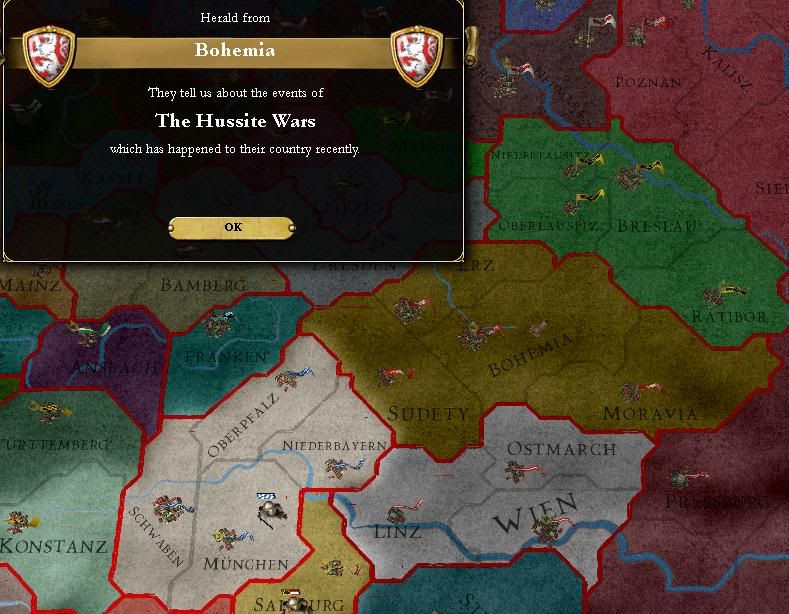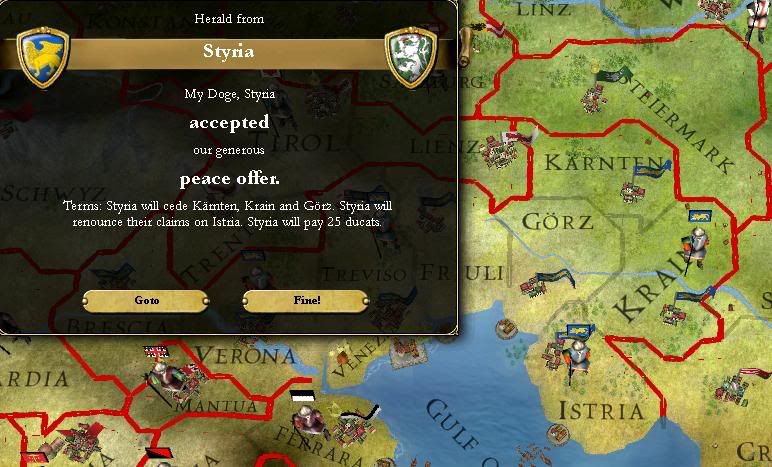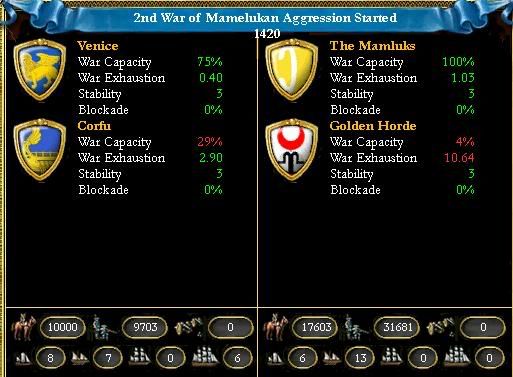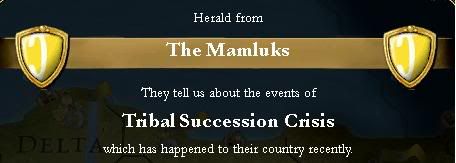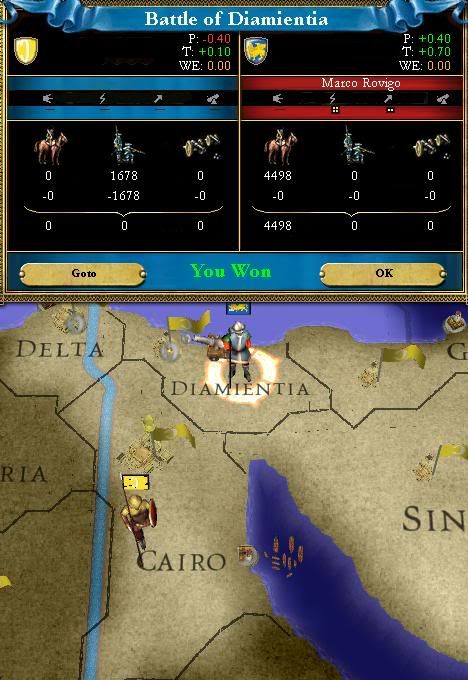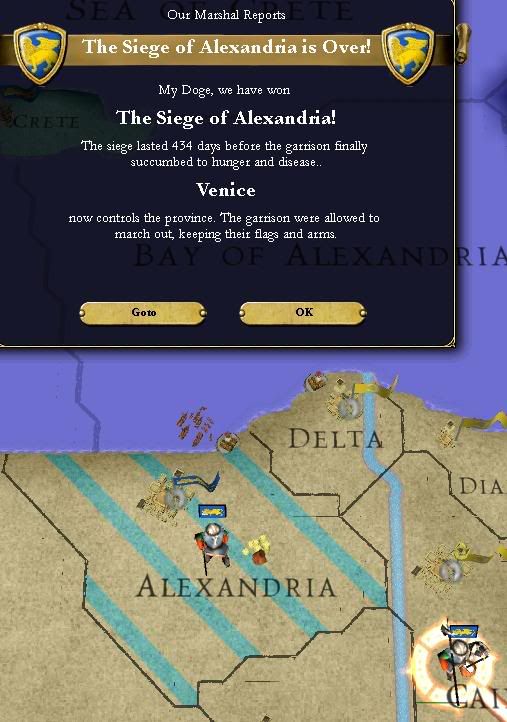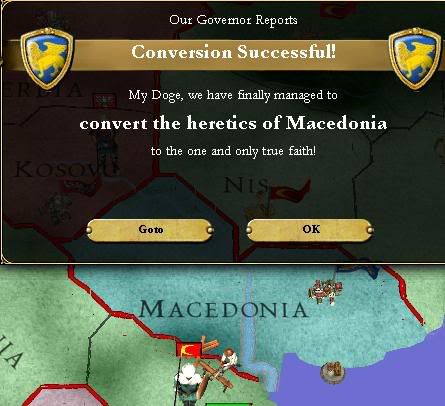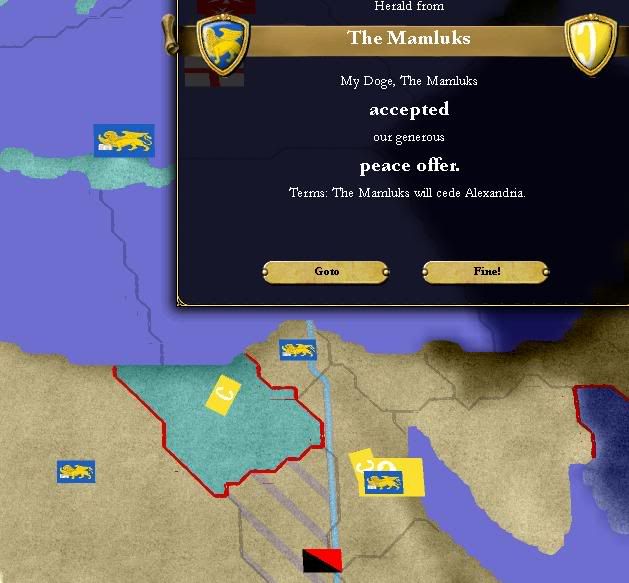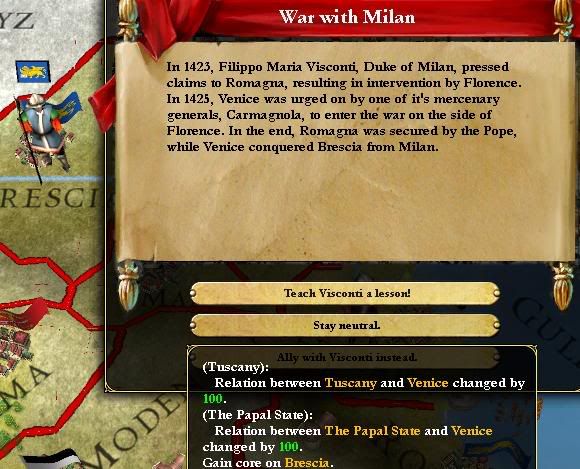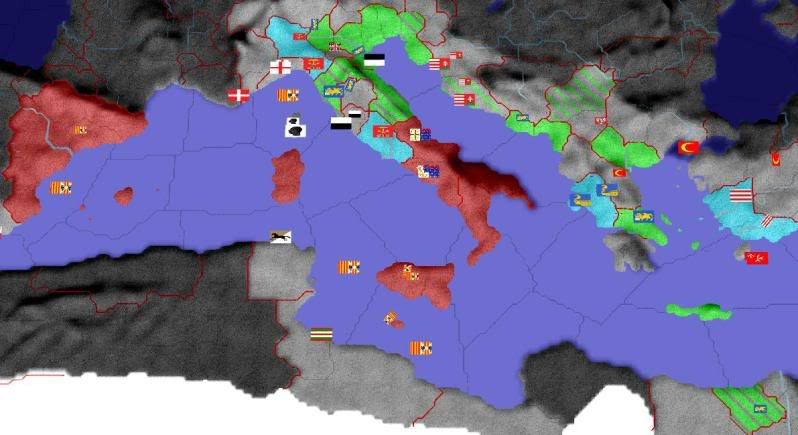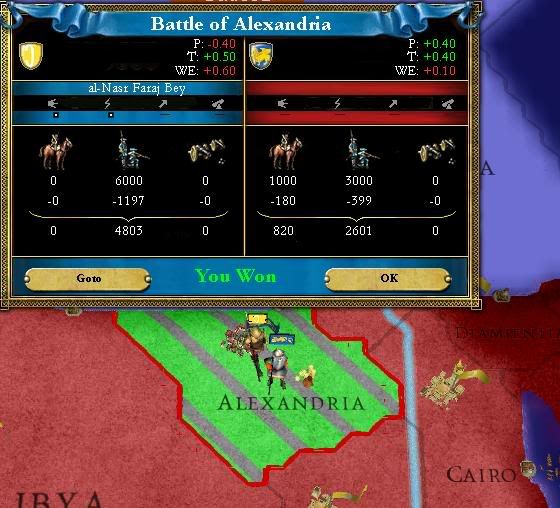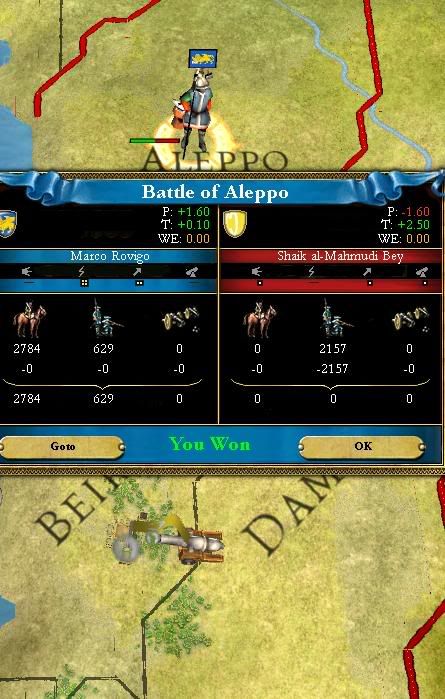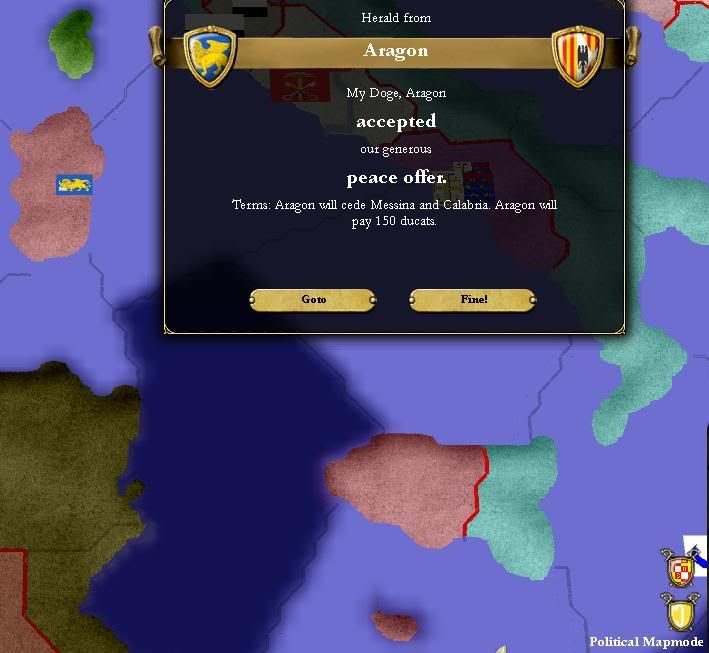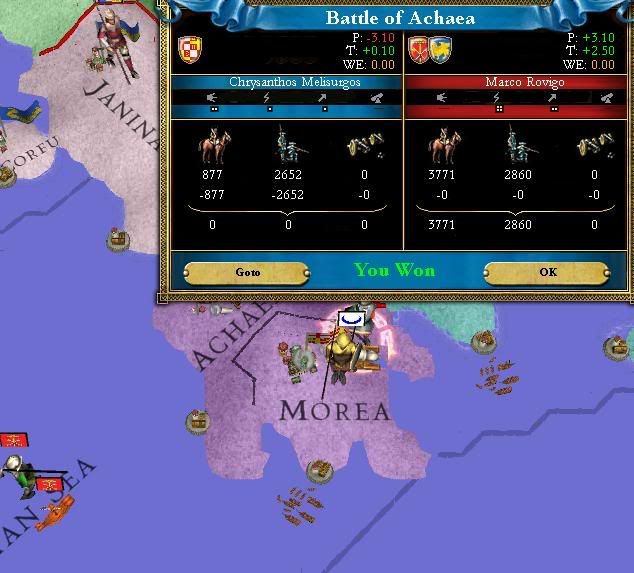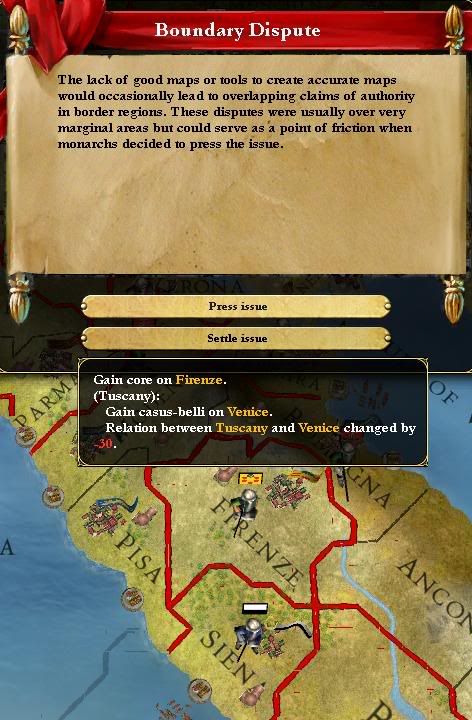Tani Coyote
Son of Huehuecoyotl
- Joined
- May 28, 2007
- Messages
- 15,195
In the Name of the Most Serene Empire
(Incidentally, I accidentally overwrote the Aragon file making this...
My Aragon story is finished I suppose... alas, at least the last chapter was epic. ¡Viva España!)
---
Settings:

Normal Difficulty
Normal AI Aggression
Historical Rulers
Historical Lucky Nations
---
Hey all! I decided to start a new Venice AAR to redeem my previous AAR which couldn't be finished due to expanding to In Nomine. The title of this AAR is a pun on the meaning of In Nomine ( "in the name of" ) and the name of the last AAR. Anyways, a few notes/house rules, etc.
1. There are no holds barred on being "gamey." I will decide whether something should be done or whether I'll roleplay just for some fun.
2. To make things more epic and to counteract any advantages from being gamey, I will be extremely limited in expansionist terms. Venice, acting historically, will not be able to acquire any land provinces that are not coastal. The main exception to this is Greece(all Greek-cultured provinces). Any landlocked provinces acquired via historical events(i.e. wars against Milan and claims in Romagna) will be fine, however. As well, any cores that are gained through the boundary dispute option, should they be landlocked, will be legitimate to take as well. However, if it is not historical and/or not a core, I will not be able to take it.
To clear up the meaning of "historical", it also refers to provinces that Venice took eventually, so I could take say, Verona or Brescia, rather than have to wait for them to come to me/get cored by event, as those were historically part of Venice.
If Italian-cultured provinces are occupied by foreigners, I must expel the foreigners, seize ownership of the lands, and turn them over to any vassal of my choosing, unless the province is coastal.
Hampering a coastal expansion, I will not be able to expand in the Western Mediterranean(anything northwest of the straits of Messina as well as Sicily) unless I can humble Aragon, the hegemon of the Western Mediterranean, via occupation of their home territories and/or the destruction of their navy.
I am allowed to take provinces that violate these rules, but I must turn them over to another country free of charge. Territories that violate the rules may, however, be held until war's end, if they are acquired and a war is still ongoing. As soon as peace is signed, however, they must be turned over to third parties.
3. To be able to occupy non-historical or non-core landlocked provinces, Venice must acquire a "great power" status, via vassalisation of all Italy, ownership of all Greek provinces, and then finally at least one victory over the Turks. For the last part to count, the Turks must have already annexed Constantinople(or alternatively, Venice annexes Constantinople and by event has to fight a war for control over it with the Turks).
Furthermore, all Italian-cultured provinces must be controlled by Italians before I can attain great power status.
4. Venice cannot convert to ANY other form of government until:
a. three moves of centralization have been made(Doge has more power and can change government).
b. Rome, Athens, and Constantinople are all owned by Venice(Venice has become a military empire).
An Italy formed by Venice would also be bound by this rule.
--- Non-Venetian notes ---
5. Several historical events have been added, such as the Italian Wars, the enlargement of France, and the growth of the Austrian Empire. Cores are also given to the colonial powers to guide their conquests, while the startup cores of many countries, such as the Byzantines, have been increased. The Timurid Empire, Golden Horde, and Mamluk Egypt will all encounter mass destabilization/disintegration at the right moment. Most threateningly, the Ottomans will now be awarded cores AGCEEP-style, meaning they have to be killed quickly before they turn into a monster a la France.
6. Peacefully annexing a country now offers several choices, from increasing aristocracy, to decentralising, to paying a fine, and finally to putting down nationalist rebellions in non-core provinces.
7. Austria starts off as three duchies rather than one, making the game a bit easier for Venice until Austria merges with the other two in the 1460s and 1490s.
8. Forms of government have been made increasingly complex. For instance, the Republic forms of government lower revolt risk nationwide depending on which type of Republic it is, while the Empire governments give military and prestige benefits. Becoming an Empire now requires 40 provinces instead of 30. If anyone wants to know the specific benefits of a government, they need merely ask.
---
In the immortal words of the immortal Shadow the Hedgehog:
"That's more than enough for the demonstration... so let's get this show on the road!"
(Incidentally, I accidentally overwrote the Aragon file making this...

My Aragon story is finished I suppose... alas, at least the last chapter was epic. ¡Viva España!)
---
Settings:

Normal Difficulty
Normal AI Aggression
Historical Rulers
Historical Lucky Nations
---
Hey all! I decided to start a new Venice AAR to redeem my previous AAR which couldn't be finished due to expanding to In Nomine. The title of this AAR is a pun on the meaning of In Nomine ( "in the name of" ) and the name of the last AAR. Anyways, a few notes/house rules, etc.
1. There are no holds barred on being "gamey." I will decide whether something should be done or whether I'll roleplay just for some fun.
2. To make things more epic and to counteract any advantages from being gamey, I will be extremely limited in expansionist terms. Venice, acting historically, will not be able to acquire any land provinces that are not coastal. The main exception to this is Greece(all Greek-cultured provinces). Any landlocked provinces acquired via historical events(i.e. wars against Milan and claims in Romagna) will be fine, however. As well, any cores that are gained through the boundary dispute option, should they be landlocked, will be legitimate to take as well. However, if it is not historical and/or not a core, I will not be able to take it.
To clear up the meaning of "historical", it also refers to provinces that Venice took eventually, so I could take say, Verona or Brescia, rather than have to wait for them to come to me/get cored by event, as those were historically part of Venice.
If Italian-cultured provinces are occupied by foreigners, I must expel the foreigners, seize ownership of the lands, and turn them over to any vassal of my choosing, unless the province is coastal.
Hampering a coastal expansion, I will not be able to expand in the Western Mediterranean(anything northwest of the straits of Messina as well as Sicily) unless I can humble Aragon, the hegemon of the Western Mediterranean, via occupation of their home territories and/or the destruction of their navy.
I am allowed to take provinces that violate these rules, but I must turn them over to another country free of charge. Territories that violate the rules may, however, be held until war's end, if they are acquired and a war is still ongoing. As soon as peace is signed, however, they must be turned over to third parties.
3. To be able to occupy non-historical or non-core landlocked provinces, Venice must acquire a "great power" status, via vassalisation of all Italy, ownership of all Greek provinces, and then finally at least one victory over the Turks. For the last part to count, the Turks must have already annexed Constantinople(or alternatively, Venice annexes Constantinople and by event has to fight a war for control over it with the Turks).
Furthermore, all Italian-cultured provinces must be controlled by Italians before I can attain great power status.
4. Venice cannot convert to ANY other form of government until:
a. three moves of centralization have been made(Doge has more power and can change government).
b. Rome, Athens, and Constantinople are all owned by Venice(Venice has become a military empire).
An Italy formed by Venice would also be bound by this rule.
--- Non-Venetian notes ---
5. Several historical events have been added, such as the Italian Wars, the enlargement of France, and the growth of the Austrian Empire. Cores are also given to the colonial powers to guide their conquests, while the startup cores of many countries, such as the Byzantines, have been increased. The Timurid Empire, Golden Horde, and Mamluk Egypt will all encounter mass destabilization/disintegration at the right moment. Most threateningly, the Ottomans will now be awarded cores AGCEEP-style, meaning they have to be killed quickly before they turn into a monster a la France.
6. Peacefully annexing a country now offers several choices, from increasing aristocracy, to decentralising, to paying a fine, and finally to putting down nationalist rebellions in non-core provinces.
7. Austria starts off as three duchies rather than one, making the game a bit easier for Venice until Austria merges with the other two in the 1460s and 1490s.
8. Forms of government have been made increasingly complex. For instance, the Republic forms of government lower revolt risk nationwide depending on which type of Republic it is, while the Empire governments give military and prestige benefits. Becoming an Empire now requires 40 provinces instead of 30. If anyone wants to know the specific benefits of a government, they need merely ask.
---
In the immortal words of the immortal Shadow the Hedgehog:
"That's more than enough for the demonstration... so let's get this show on the road!"




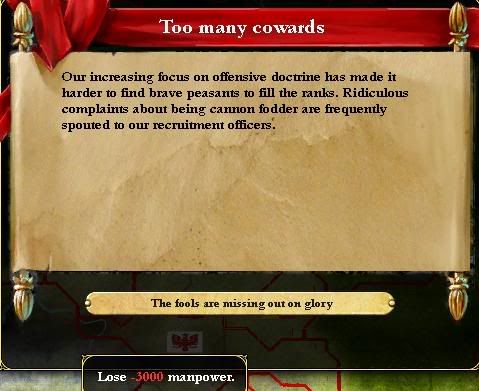



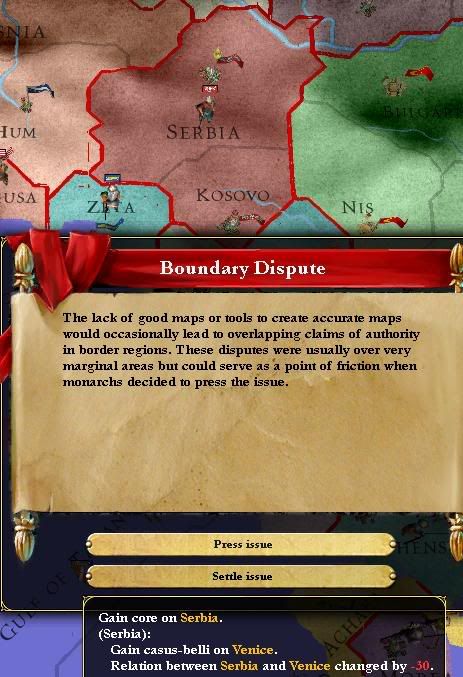


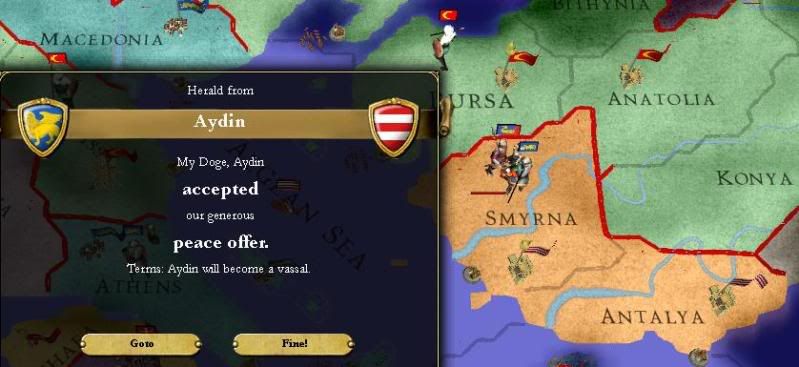







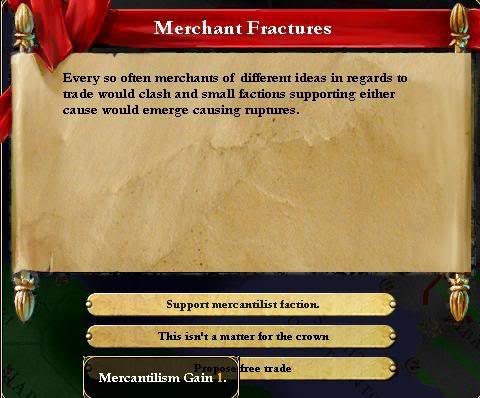


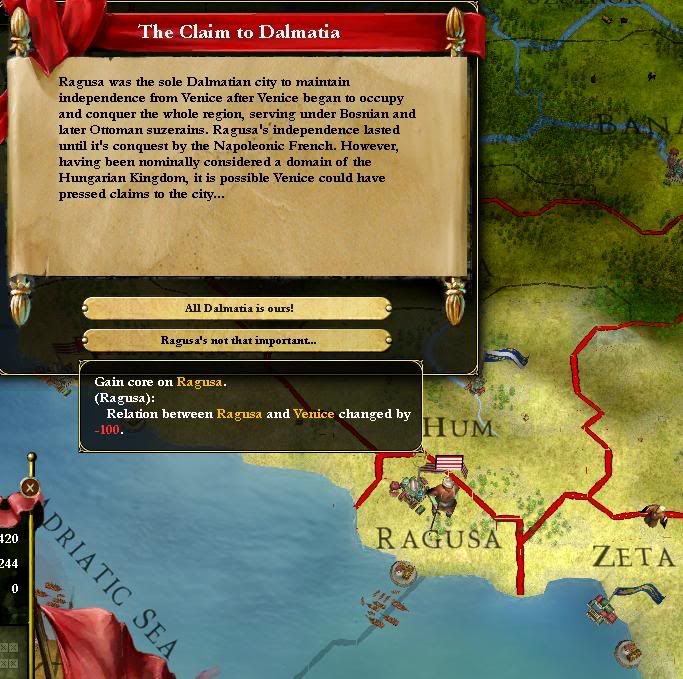

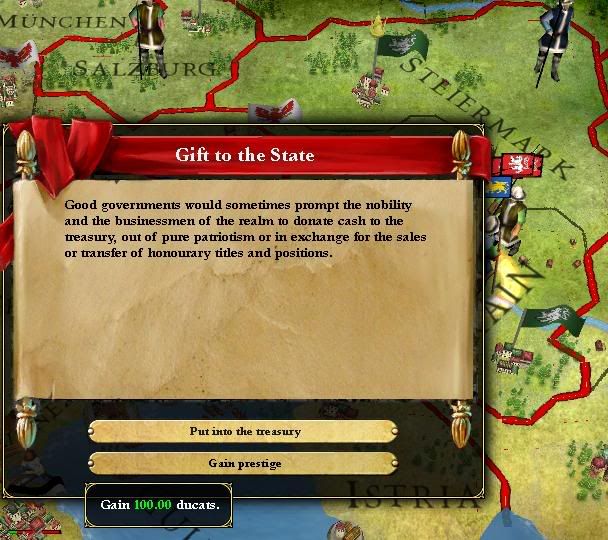




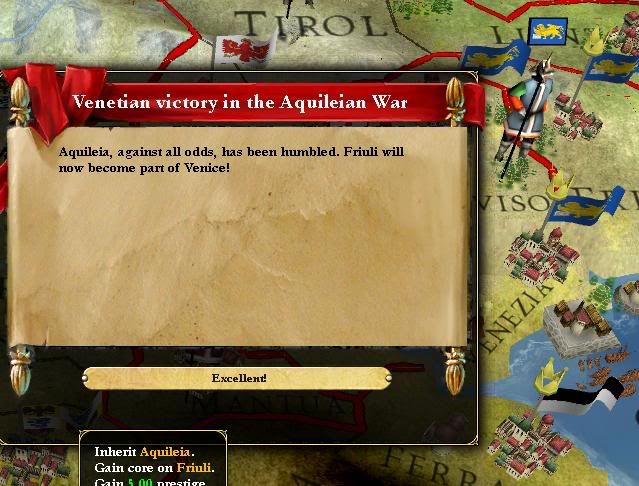
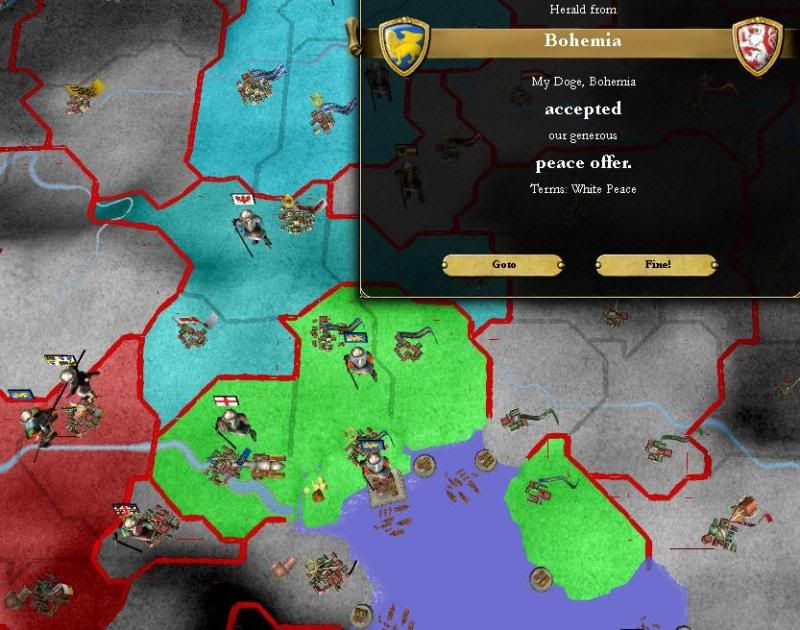
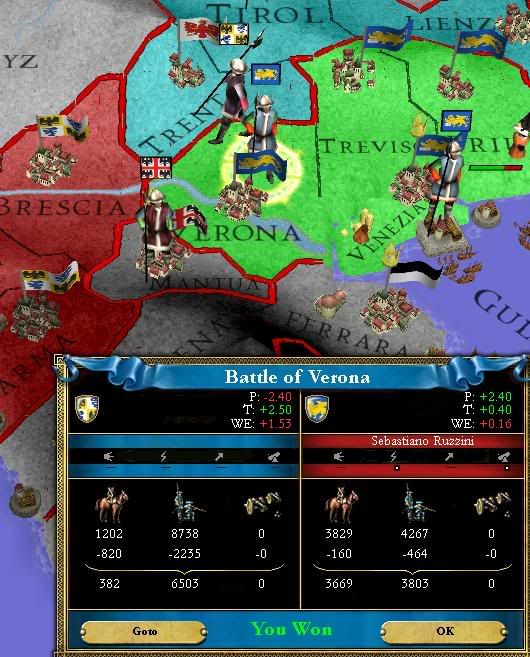





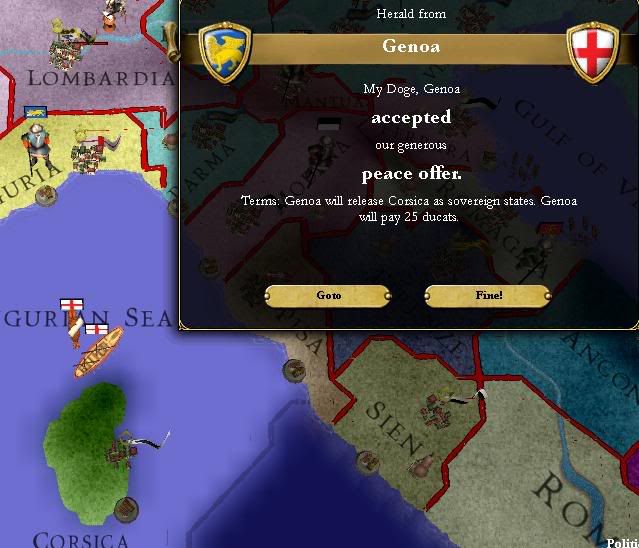
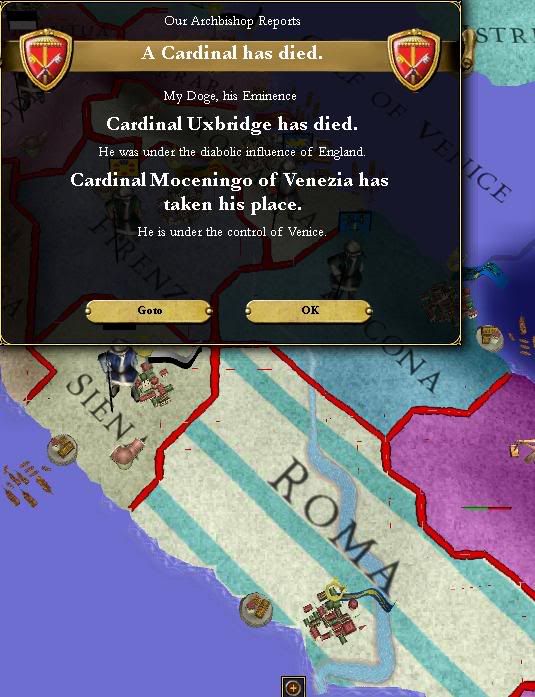

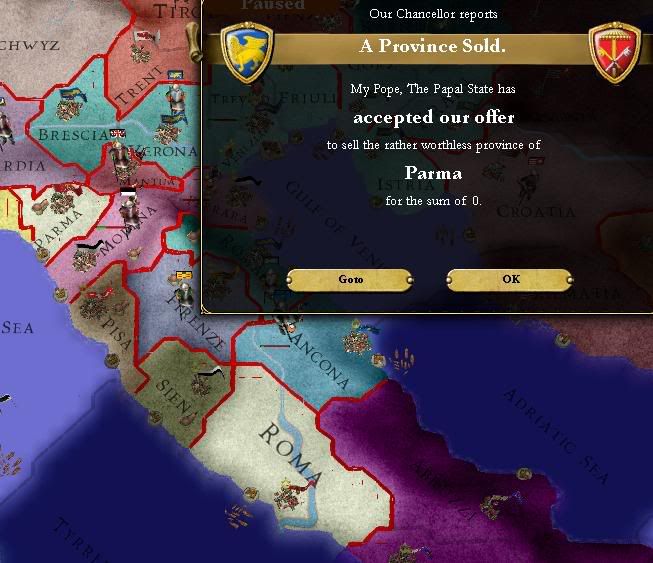


 Thank Winner for giving me the idea for the name.
Thank Winner for giving me the idea for the name. 

